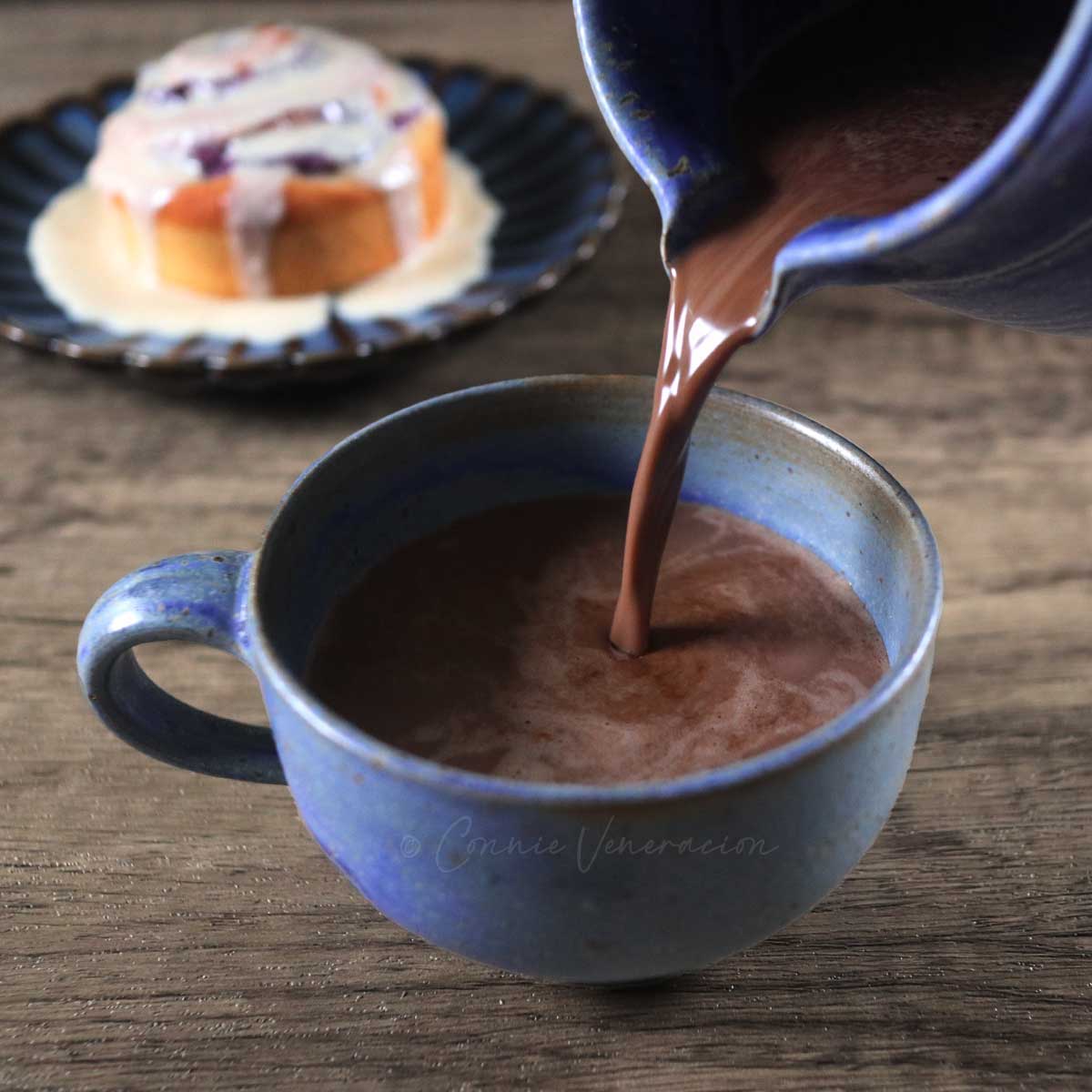Indulge in the comforting embrace of a rich and velvety hot chocolate, a timeless beverage that has warmed hearts and souls for centuries. Its origins trace back to ancient Mesoamerica, where the Mayans and Aztecs revered it as a sacred elixir.
Today, hot chocolate continues to captivate taste buds worldwide, offering a delectable fusion of flavors and aromas.
From cozy winter evenings to festive holiday gatherings, hot chocolate serves as an ideal companion, inviting us to savor the moment. Its versatility extends to a myriad of flavor profiles, allowing us to customize it to our hearts’ content. Whether you prefer a classic blend or a daring infusion, this versatile drink promises a delightful experience.
Introduction
A hot chocolate drink is a warm, chocolate-flavored beverage made from cocoa powder, milk, and sugar. It is a popular and comforting drink that is enjoyed by people of all ages.
The origins of hot chocolate can be traced back to the ancient Mayans and Aztecs, who drank a beverage made from cocoa beans. The drink was introduced to Europe by Spanish explorers in the 16th century and quickly became a popular favorite.
Today, hot chocolate is enjoyed all over the world.
Popularity
Hot chocolate is a popular drink for many reasons. It is warm and comforting, making it perfect for cold weather. It is also a relatively simple drink to make, and it can be customized to taste. Hot chocolate can be made with different types of milk, such as cow’s milk, almond milk, or soy milk.
It can also be made with different flavors, such as vanilla, cinnamon, or peppermint.
Ingredients
A classic hot chocolate drink requires only a few essential ingredients:
- Chocolate (milk, dark, or white chocolate, depending on desired flavor and sweetness)
- Milk (any type, such as whole milk, skim milk, or almond milk)
- Sweetener (sugar, honey, or maple syrup, to taste)
Variations in these ingredients can create a wide range of hot chocolate flavors and experiences.
Chocolate
The type of chocolate used significantly influences the taste and richness of the hot chocolate. Milk chocolate is the most common choice, offering a balance of sweetness and chocolate flavor. Dark chocolate provides a more intense chocolate flavor, while white chocolate creates a sweeter, creamier drink.
Preparation Methods
Preparing hot chocolate involves several methods, each with its unique advantages and ease of use. We’ll explore the stovetop method in detail, followed by alternative approaches.
Stovetop Method
- In a small saucepan, whisk together cocoa powder, sugar, and salt.
- Gradually whisk in milk until smooth.
- Bring the mixture to a simmer over medium heat, stirring constantly.
- Reduce heat to low and simmer for 5-7 minutes, or until heated through.
- Remove from heat and stir in vanilla extract.
Flavor Enhancements

The flavors of hot chocolate can be enhanced with various ingredients, creating unique and delightful variations. Common flavorings include cinnamon, nutmeg, and vanilla extract, which add warmth and depth to the drink.
Creative flavor combinations can also be explored, such as adding a pinch of chili powder for a subtle kick or mixing in peanut butter for a nutty twist. Garnish options include whipped cream, chocolate chips, and marshmallows, adding sweetness and visual appeal.
Whipped Cream
- Adds a creamy and airy texture to hot chocolate.
- Can be flavored with vanilla extract or cocoa powder for extra indulgence.
Chocolate Chips
- Provides a burst of chocolate flavor with every sip.
- Can be used as a topping or stirred into the hot chocolate for a richer taste.
Presentation and Serving

When presenting hot chocolate, you can opt for classic mugs or cups. Alternatively, you can serve it in elegant glasses for a more sophisticated touch.
Appropriate Accompaniments
Enhance the hot chocolate experience with delectable accompaniments. Consider serving it with freshly baked cookies, offering a sweet and satisfying complement. Alternatively, indulge in the classic pairing of fluffy, toasted or grilled marshmallows, creating a nostalgic and comforting treat.
Health
Hot chocolate, while indulgent, can offer some health benefits. It’s a good source of flavonoids, which are plant-based compounds with antioxidant properties. These compounds have been linked to reduced risk of heart disease, stroke, and some types of cancer.
However, it’s important to note that the calorie content of hot chocolate can vary widely depending on the ingredients used. A typical serving of hot chocolate made with whole milk and added sugar can contain around 200-300 calories. To make a healthier version, opt for low-fat milk or water instead of whole milk, and use dark chocolate with a higher cocoa content (70% or higher) instead of milk chocolate.
Tips for making healthier versions
- Use low-fat milk or water instead of whole milk.
- Use dark chocolate with a higher cocoa content (70% or higher) instead of milk chocolate.
- Limit the amount of sugar added.
- Add some healthy toppings, such as fresh fruit, nuts, or whipped cream.
Final Conclusion
As we conclude our exploration of the hot chocolate drink recipe, we are left with a deep appreciation for its timeless appeal. Its comforting warmth, rich flavors, and endless customization possibilities make it a beverage that transcends generations and cultures.
Whether enjoyed alone or shared with loved ones, hot chocolate remains a cherished treat, offering solace and joy with every sip.
Frequently Asked Questions
What are the essential ingredients for a basic hot chocolate drink?
Milk, chocolate (milk, dark, or white), and a sweetener of your choice.
Can I use different types of milk in my hot chocolate?
Yes, you can use any type of milk you prefer, including dairy milk, almond milk, oat milk, or soy milk.
What are some creative flavor combinations I can try in my hot chocolate?
Experiment with adding spices like cinnamon, nutmeg, or cardamom, or try infusions with extracts like vanilla, almond, or peppermint.
